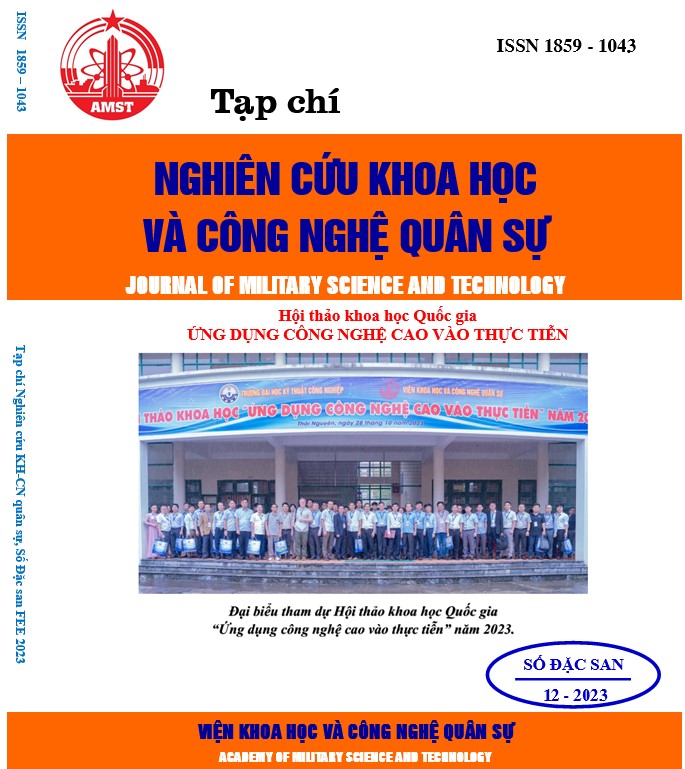Study on fabricating nanoporous silica as an inhibitor carrier for metal corrosion protection
592 viewsDOI:
https://doi.org/10.54939/1859-1043.j.mst.FEE.2023.230-237Keywords:
Nanoporous silica; Ionic liquid; Corrosion inhibitor.Abstract
The synthesis of nanoporous silica and its metal corrosion inhibitor carrying ability was reported, and the material can be used in the fabrication of smart coatings for metal protection. The synthesized nanoporous silica has a size of ≤ 200 nm, a surface area of ≥ 1000 m2/g, a capillary size of 16 ÷ 20 nm, and a corrosion inhibitor capacity of 10 ÷ 15% by mass. The study also showed the ability to increase the yield to 20 g of porous SiO2/batch when using the 600 rpm disk stirring method. The analysis of materials using FTIR, XRD, TGA, SEM, TEM allows the evaluation of the material's characteristics, the efficiency of the nanoporous silica materials synthesis, and the ability to carry inhibitors on the synthesized materials.
References
[1]. Nandiyanto, A. B. D., Kim, S.-G., Iskandar, F., & Okuyama, K. “Synthesis of spherical mesoporous silica nanoparticles with nanometer-size controllable pores and outer diameters”. Microporous and Mesoporous Materials, 120(3), 447–453, (2009). DOI: https://doi.org/10.1016/j.micromeso.2008.12.019
[2]. Nooney, R. I., Thirunavukkarasu, D., Chen, Y., Josephs, R., & Ostafin, A. E. “Synthesis of Nanoscale Mesoporous Silica Spheres with Controlled Particle Size”. Chemistry of Materials, 14(11), 4721–4728, (2002). DOI: https://doi.org/10.1021/cm0204371
[3]. A.G. Wallace, M.D. Symes, “Water-splitting electrocatalysts synthesized using ionic liquids”, Trends Chem 1, 247–258, (2019). DOI: https://doi.org/10.1016/j.trechm.2019.03.003
[4]. G. Parveen, S. Bashir, A. Thakur, S.K. Saha, P. Banerjee, A. Kumar, “Experimental and computational studies of imidazolium based ionic liquid 1-methyl- 3- propylimidazolium iodide on mild steel corrosion in acidic solution”, Mater. Res. Express 7 (2019). DOI: https://doi.org/10.1088/2053-1591/ab5c6a
[5]. E.K. Ardakani, E. Kowsari, A. Ehsani, S. Ramakrishna, “Performance of all ionic liquids as the eco-friendly and sustainable compounds in inhibiting corrosion in various media: a comprehensive review”, Microchem. J. 165, 106049, (2021). DOI: https://doi.org/10.1016/j.microc.2021.106049
[6]. Suyanta, Agus Kuncaka, “Utilization of rice husk as raw material in synthesis of mesoposous silicates”, Indo. J. Chem., 11(3), 279 – 284, (2011). DOI: https://doi.org/10.22146/ijc.21393
[7]. Möller, K., Kobler, J., & Bein, T. “Colloidal Suspensions of Nanometer-Sized Mesoporous Silica”. Advanced Functional Materials, 17(4), 605–612, (2007). DOI: https://doi.org/10.1002/adfm.200600578
[8]. Héctor Iván M. O. “Hydrothermal Synthesis of Mesoporous Silica MCM-41 Using Commercial Sodium Silicate”. J. Mex. Chem. Soc, 57 (2), 73–79, (2013).
[9]. Thomas, E., Thomas, D., Bhuvaneswari, S., Vijayalakshmi, K. P., & George, B. K. “1-Hexadecyl-3-methylimidazolium chloride: Structure, thermal stability and decomposition mechanism”. Journal of Molecular Liquids, 249, 404–411, (2018). DOI: https://doi.org/10.1016/j.molliq.2017.11.029
[10]. Yi Li., Ming D. W., Cheng W., Jing F., Jian Sh. Li, Lian J. W. & Jia J. F., “Facile Synthesis of Smart Nanocontainers as Key Components for Construction of Self-Healing Coating with Superhydrophobic Surfaces”, Nanoscale Research Lett. 11, 231, (2016). DOI: https://doi.org/10.1186/s11671-016-1444-3







